Pink Diamond Quality Checklist
- Color Grade: Fancy
- Clarity Grade: SI
- Symmetry: Good to Excellent
- Polish: Good to Excellent
- Polish: Very Good Or Excellent
- Fluorescence: None to Faint
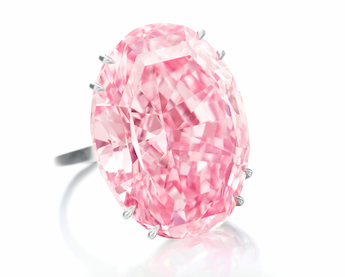
Pink diamonds are in the news: breaking records at auctions, turning heads in million-dollar celebrity engagement rings, and being named “the world’s hottest gemstone” by
The New York Post.
Blake Lively, Maria Carey, Victoria Beckham and Anna Kournikova all have pink diamond engagement rings. Jennifer Lopez famously gave a pink diamond engagement ring back to Ben Affleck.
Maybe she should have held on to it: prices for pink diamonds have risen 400% in value in the last 18 years. And now the mine that produces 90% of the supply is closing down.
One thing seems clear: pink diamonds, already rare and expensive, are sure to get even more so.
One of the world’s most valuable diamonds is the Daria-i-Noor, or Sea of Light in Persian. This rare 182-carat pink diamond is part of the Iranian Crown Jewels. This huge pink diamond has a fabled pedigree: like the Koh-i-Noor Diamond, now in the British Crown Jewels, it was mined in Vijayanagara, India and was owned by several royal families before being captured by the Mughal emperors. It’s possible it was set in the throne of Shah Jahan, builder of the Taj Mahal, before it was traded to Nader Shah of Iran in 1747 as ransom for the city of Delhi and the crown of India.
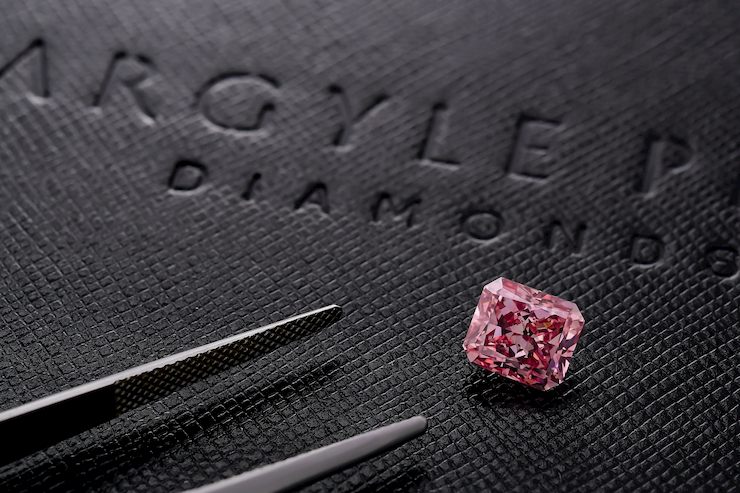
Queen Elizabeth also owns a famous pink diamond, the Williamson Pink, a 23.6 carat pink diamond mined in Tanzania given to her as a wedding present in 1947. It is set in the center of a floral brooch.
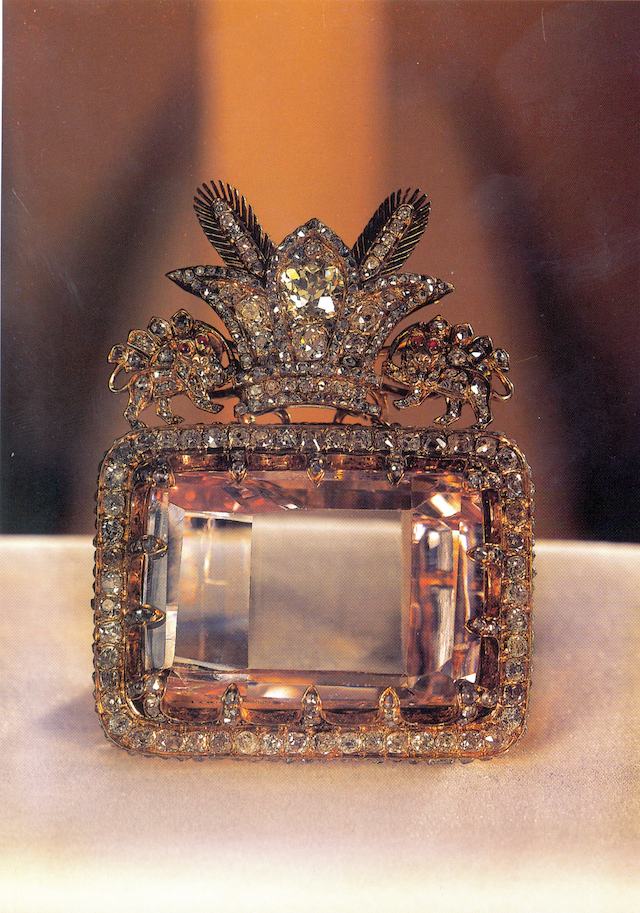
But even the queen’s pink diamond pales in comparison to the Pink Star, which was discovered in South Africa in 1999. This fancy vivid pink diamond weighing 59.60 carats was a centerpiece of the Smithsonian’s Splendor of Diamonds Exhibit. In April 2017, the Pink Star set the world auction record price for any diamond or jewel when it sold for $71.2 million to jeweler Chow Tai Fook, who named it the CTF Pink Star.
Large or small, a gift of a pink diamond means romance that never ends.
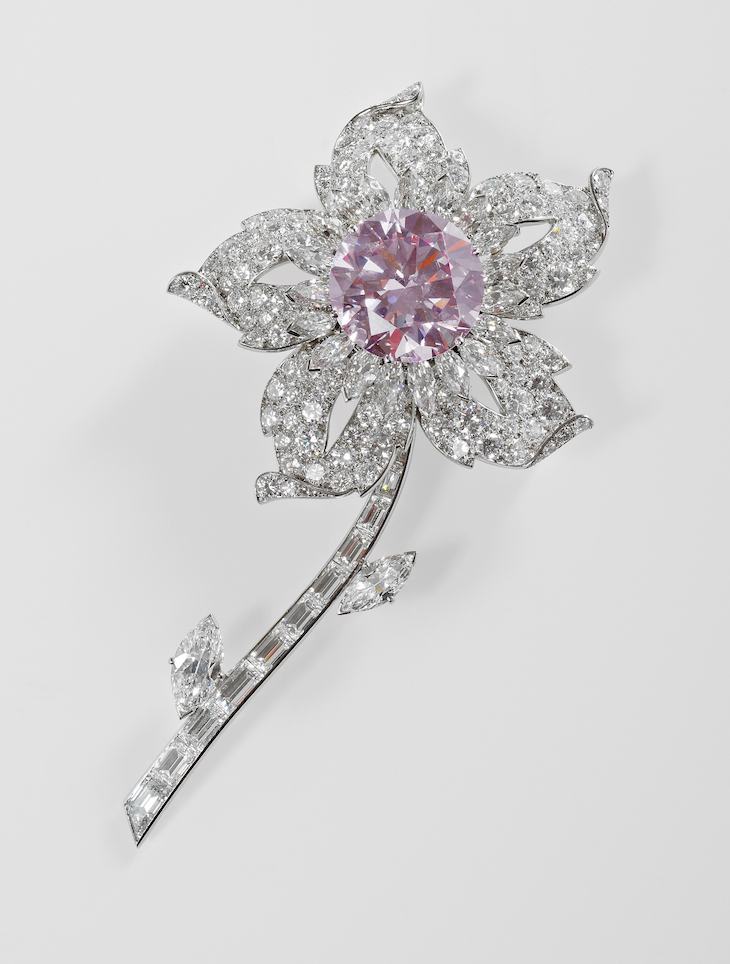
Pink diamonds are rare today. But they were even more scarce before the launch of the Argyle Diamond Mine in 1983. Today, Argyle is the source of about 90% of the world’s pink diamonds, including special gems with vivid magenta and fuchsia hues.
While they attract most attention, Argyle pink diamonds account for much less than 1% of the mine’s total production. For many years, Argyle was the world’s largest diamond mine, producing large quantities of lower quality diamonds, including many off-white champagne diamonds. Most of the pink diamonds found in the Argyle mine are in small sizes.
Now the mine’s owner Rio Tinto, has announced it will close in 2020. Rio says Argyle has only about 150 colored diamonds of sufficient quality left for its annual tender, a by-invitation only showing of the mine’s 50-odd most valuable gems.
Although Argyle produces the most intense pink gems, it generally doesn’t produce pink diamonds above a few carats in size. The largest pink diamond ever found in the Argyle mine is the Argyle Pink Jubilee Diamond, which weighs 12.76 carats.
The most famous pink diamonds in history and many of the lighter cotton-candy pink and bubble gum pink gems you see at auction are found in mines in Africa.
Pink is the color of happiness and romance. It’s positive and filled with joy, as celebratory as pink champagne. Like true love, pink diamonds are rare and treasured.
Only 1 in every 10,000 diamonds is a fancy color and pink is rare even among fancy colored diamonds. That’s why these sweet candy-colored diamonds are the world’s most valuable gem, breaking records at auction.
While we know the color of blue diamonds is due to trace amounts of boron and the color of yellow diamonds is thanks to nitrogen, the color of pink diamonds is a bit of a mystery. Scientists think it has something to do with extreme pressure altering the crystal lattice.
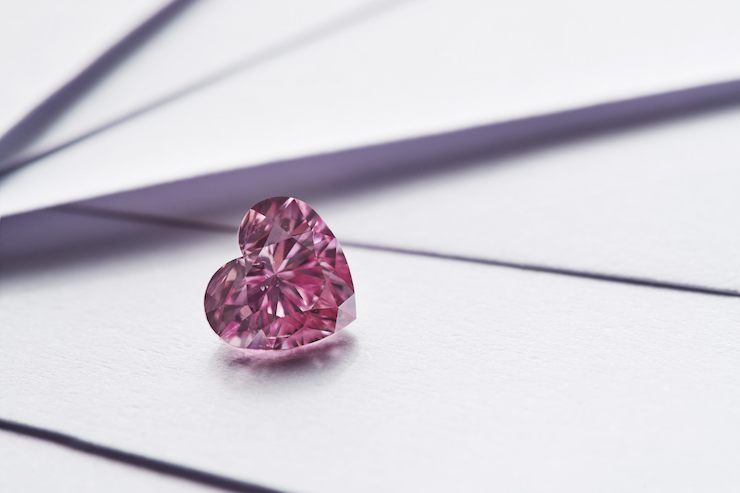
The most important quality factor for pink diamonds is the saturation, or intensity, of the color. The GIA color grading scale for pink diamonds begins with Faint, Very Light, and Light and then continues into the coveted fancy pink colors: Fancy Light, Fancy, Fancy Intense, and Fancy Vivid. Fancy Deep or Fancy Dark may be used to describe diamonds that have a strong color but not as much saturation as Fancy Intense Pink and Fancy Vivid Pink diamonds. The price per carat jumps significantly between the Fancy Light and the Fancy color grades.
Pink diamonds can also have a secondary hue, most commonly brown, orange, or purple. The last color mentioned on a GIA report is the dominant color. The GIA uses an adjective for the color when the secondary color is slight and a noun for the color when it is more apparent. So an orangy pink diamond is primarily pink with a slight modifying tone of orange but an orange pink diamond, although still primarily pink, has a more noticeable orange tint. Pink diamonds with brown secondary colors are worth less. Pink diamonds with purple secondary colors are more rare than pinks with orange secondary colors. In the world of fancy colored diamonds, small differences in color can result in large differences in the price per carat.
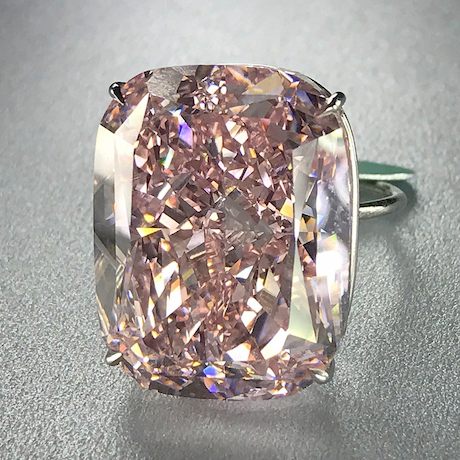
Argyle has its color grading scale for Argyle pink diamonds, dividing them into four hue categories: Purplish Pink (PP), Pink (P), Pink Rosé (PR) and Pink Champagne (PC). The color intensity is graded from 1 (the highest saturation) to 9 (the lowest saturation). So These grades are helpful for choosing the small pink diamonds in pink diamond pave and pink diamond bands and halos.
But an Argyle color grade is never a substitute for a GIA Colored Diamond Grading Report. GIA has graded virtually every significant fancy colored diamond on the market: only GIA’s description of a fancy diamond’s color is trusted by the market when it comes to pricing fancy colored diamonds. At RockHer, we never sell a fancy colored diamond without a grading report from GIA. All the fancy pink diamonds at the Argyle tender also have GIA Colored Diamond Grading Reports.
Having a grading report from GIA also confirms that a pink diamond’s color is natural, that the diamond hasn’t been treated and that that the diamond is not laboratory grown.
Because pink diamonds are so rare and valuable, a gem with fine color may have eye visible inclusions and still be selected for the ultra-exclusive Argyle tender. Paler pink diamonds should be eye clean or free from distracting inclusions in the center.
Unlike colorless diamonds, which are most often cut into round brilliant cuts, pink diamonds are most often found in fancy shapes like oval cuts, cushion cuts, radiant cuts, pear shapes, and emerald cuts. That’s because the round brilliant cut tends to dilute the color of pink diamonds. Cutters will do everything they can to enhance the color, including making the girdle thicker or the proportions deeper. That’s because color is so important to the value of the diamond it overrules all other factors.
At RockHer we specialize in setting pink diamonds to maximize their impact. We always recommend setting a pink diamond in a rose gold setting. It will help to emphasize its rosy glow. Contrasting a pink diamond center gem with a colorless diamond halo can provide contrast to set off the color of a pink diamond center stone.
We can find you brownish pink diamonds and orangy pink diamonds that can be set to emphasize the pink in their color to give you the romance of the rare pink hue at a more affordable price.
Pink Diamond Quality Checklist
Love the look of a pink diamond but don't love the price tag? At RockHer, we are big fans of pink sapphire engagement rings. Sapphires are beautiful, rare, and durable gemstones that are much more affordable than fancy colored diamonds. And there are many more pinks available, from pastel shades that mimic the look of a fancy pink diamond to more intense colors that would have a six-figure price tag if you could match them in diamond. Lady Gaga and Princess Eugenie received pink sapphire engagement rings. You may find the pink of your dreams is more accessible than you thought it could be. Another alternative to pink diamonds is morganite. This pastel pink beryl has excellent brilliance and a subtle color that reminds us of pink diamonds. And morganite is more affordable than pink sapphire.
The style of your engagement ring setting can make your pink diamond look more or less pink. Even if your diamond is light pink or fancy light pink, you can make the color look more saturated by doing two things. First, surround the diamond with rose gold prongs or a rose gold bezel. The entire basket that holds the diamond should be rose gold if possible. Then accent the ring with bright white diamonds in while gold or platinum. The reflection from the rose gold, combined with the contrast with the white diamond in platinum or white gold, makes a paler pink diamond look more intense.
The contrast effect means that halo pink diamond halo engagement rings are a popular choice. Three-stone engagement rings with a pink diamond center stone and white diamond side stones are another way to add contrast and make the color of your pink diamond look richer.
If you are in love with pink diamonds but a pink diamond center stone isn’t in your budget, you can add the romance of pink diamonds to your ring by adding a pink diamond halo to a colorless diamond center stone. We can also add pink diamond accents to an eternity ring or wedding ring.